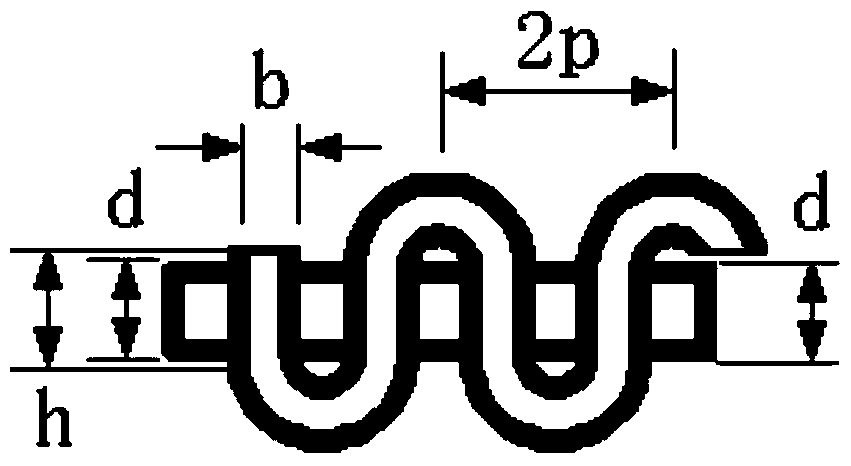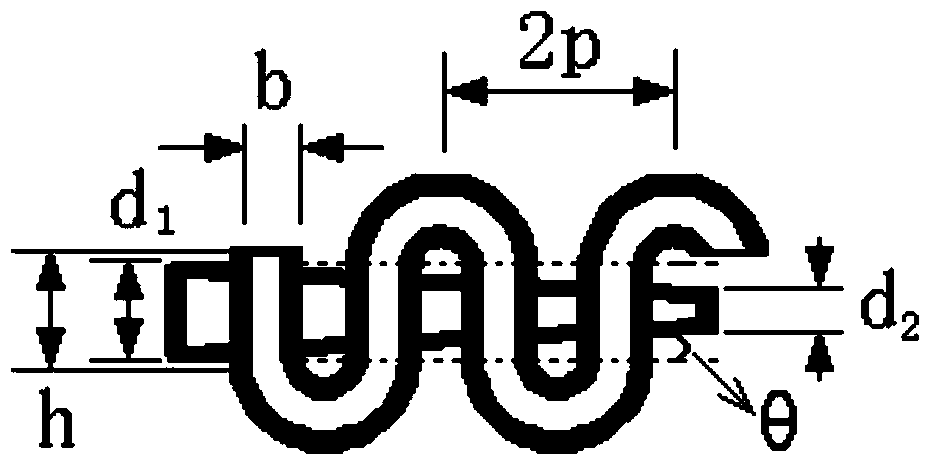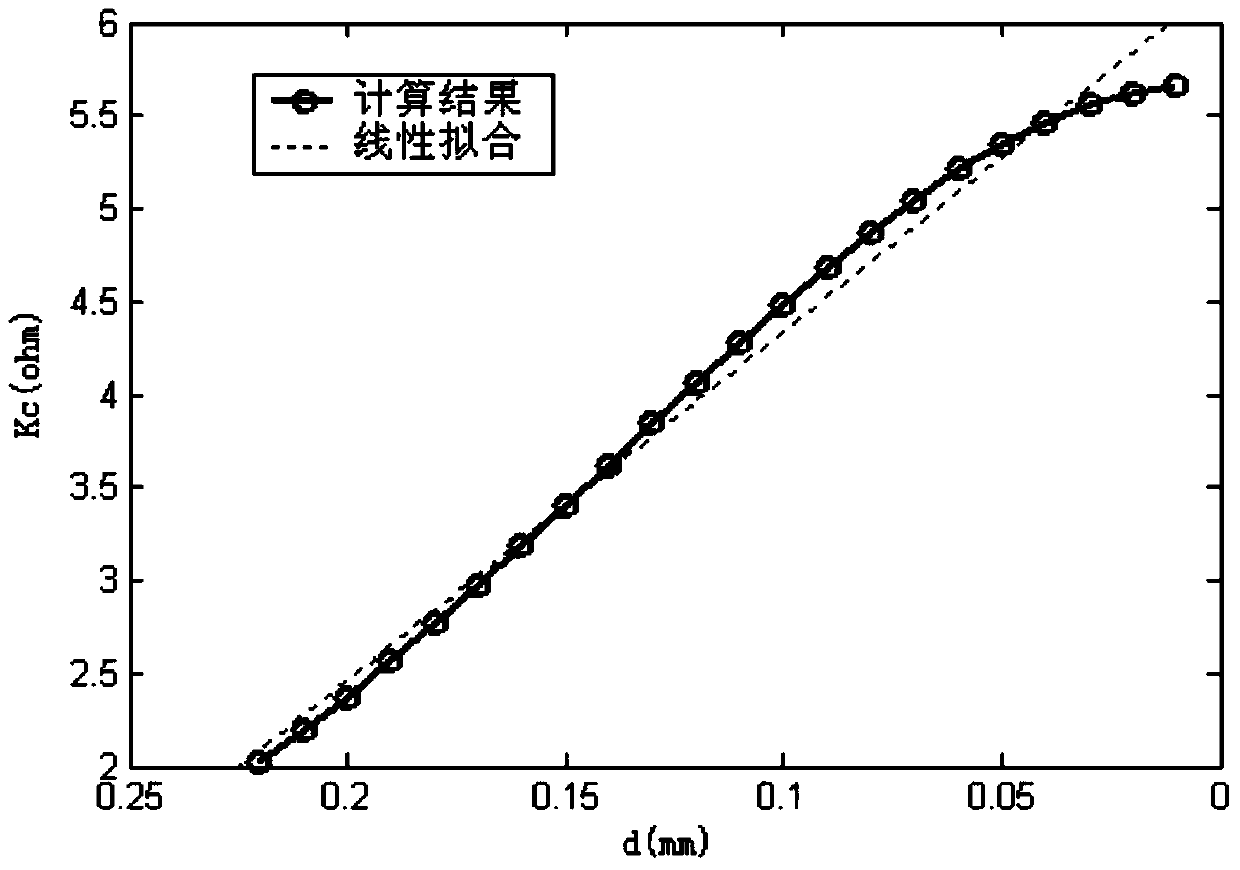A Folded Waveguide Slow-Wave Structure with Decreasing Electron Beam Channels
A technology of electron injection channel and slow wave structure, which is applied to the circuit components of transit time electron tubes, etc., can solve the problems of high precision processing technology and high centering requirements, reduce coupling impedance, low flow rate and other problems, and avoid Decreased power performance, improved output power performance, and improved interaction impedance
- Summary
- Abstract
- Description
- Claims
- Application Information
AI Technical Summary
Problems solved by technology
Method used
Image
Examples
Embodiment Construction
[0016] specific implementation plan
[0017] In order to clearly illustrate the effect of this folded waveguide slow-wave structure with radial size decreasing electron beam channels, the following example is given, setting the structure size a=1.9mm, b=0.3mm, p=0.7mm, h=0.7 mm, d=0.44mm. The three-dimensional electromagnetic software is used to simulate the all-metal slow wave structure of the electron beam channel with radial size decreasing in the present invention, and the size of the electron beam channel and the coupling impedance at different positions in the channel are calculated, and the full-metal slow wave structure using the convergent electron beam channel is simulated. The performance of the metal slow-wave structure device. At this time, the diameter of the entrance of the electron injection channel is 0.44mm, and the exit is 0.16mm in a conical shape. Comparing the simulation results with the injection wave interaction results of the traditional slow-wave str...
PUM
 Login to View More
Login to View More Abstract
Description
Claims
Application Information
 Login to View More
Login to View More - R&D
- Intellectual Property
- Life Sciences
- Materials
- Tech Scout
- Unparalleled Data Quality
- Higher Quality Content
- 60% Fewer Hallucinations
Browse by: Latest US Patents, China's latest patents, Technical Efficacy Thesaurus, Application Domain, Technology Topic, Popular Technical Reports.
© 2025 PatSnap. All rights reserved.Legal|Privacy policy|Modern Slavery Act Transparency Statement|Sitemap|About US| Contact US: help@patsnap.com



